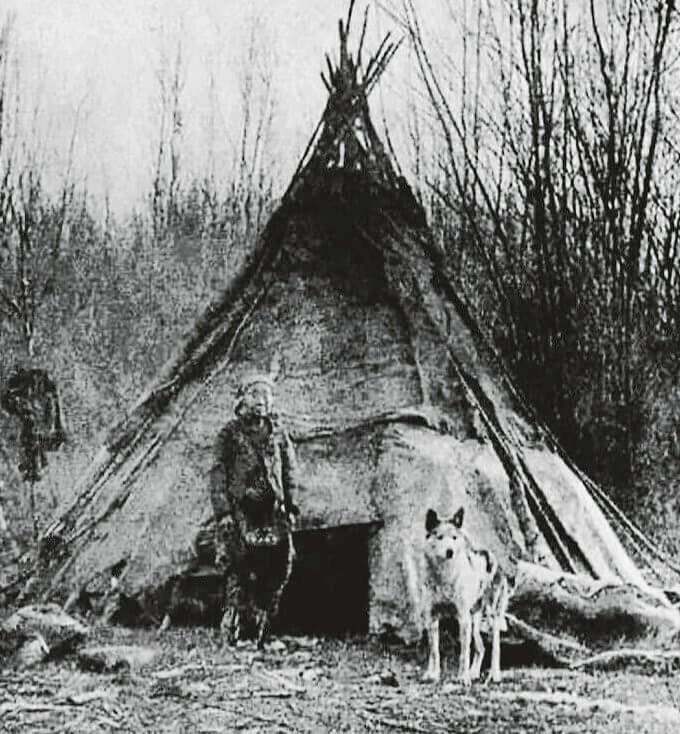The relationship between Native Americans and wolves is a subject that has fascinated historians, anthropologists, and nature enthusiasts alike. Far from viewing wolves as mere predators to be feared or eradicated, many Native American tribes saw them as spiritual beings, worthy of respect and admiration. This unique relationship was not just based on coexistence but was almost sacred in its depth and complexity.

A Mutual Respect
Native Americans and wolves shared the same lands, hunted the same prey, and even had similar social structures, with a focus on family and pack unity. This led to a mutual respect between the two, as each recognized the skills and abilities of the other. Wolves were admired for their hunting prowess, their loyalty to the pack, and their ability to survive in harsh conditions.
Spiritual Significance
For many Native American tribes, wolves held a special place in their spirituality and folklore. They were often seen as totem animals or spiritual guides, helping individuals or entire tribes in times of need. In some traditions, wolves were considered the earthly embodiment of powerful spirits, and their presence was seen as a blessing.
Lessons from the Wolf
The wolf also served as a teacher. Native Americans observed wolves to learn effective hunting techniques, like stalking and cooperative hunting. The wolf’s commitment to its pack was another lesson, teaching the importance of community and family bonds. The saying “It takes a village to raise a child” could easily be adapted to “It takes a pack to raise a wolf.”
The Wolf in Native American Art and Storytelling
Wolves frequently appear in Native American art and storytelling, often as symbols of strength, loyalty, and spiritual power. Stories about wolves were passed down through generations, serving both as entertainment and as a way to impart moral and practical lessons. In these stories, wolves were often portrayed as wise and noble creatures, rather than the menacing figures often seen in European folklore.
The Modern Perspective
Today, as wolves are making a gradual return to some of their former habitats, the ancient bond between Native Americans and wolves is being reexamined. Many Native American communities are involved in wolf conservation efforts, seeing it as a continuation of the respect and kinship that their ancestors felt for these magnificent animals.
The relationship between Native Americans and wolves is a beautiful example of coexistence and mutual respect between humans and nature. It serves as a reminder that every creature has its place in the ecosystem and that by understanding and respecting each other, we can all live in harmony. This almost sacred bond is not just a historical footnote but a living tradition that continues to inspire and guide us today.
What Can We Learn from This Sacred Bond?
The relationship between Native Americans and wolves offers valuable lessons for how we can interact with nature today. It teaches us that every animal has its role in the ecosystem and deserves to be treated with respect and dignity. Instead of viewing wolves and other predators as threats, we can see them as essential parts of a balanced environment.
Why Is This Relationship Relevant Today?
As we face environmental challenges and the loss of biodiversity, the Native American philosophy of respecting all life forms becomes increasingly relevant. Wolves, once hunted to the brink of extinction, are slowly making a comeback thanks to conservation efforts. Many of these efforts are spearheaded or supported by Native American communities, who see the reestablishment of the wolf population as a spiritual and ecological victory.
How Can We Apply These Lessons in Our Lives?
While most of us don’t interact with wolves on a daily basis, the principles of respect, coexistence, and mutual benefit can be applied in many areas of our lives. Whether it’s advocating for ethical treatment of animals, supporting conservation efforts, or simply learning to live in harmony with our environment, these age-old lessons have modern-day applications.
Are There Other Examples of Such Bonds in Native American Culture?
Yes, the wolf is just one example. Native American culture is rich with examples of sacred bonds between humans and animals, including the buffalo, eagle, and bear, among others. Each of these relationships is unique but rooted in the same principles of mutual respect and spiritual significance.
Can This Relationship Inspire Contemporary Conservation Efforts?
Absolutely. The Native American approach to wolves and nature, in general, offers a holistic model for conservation—one that respects the interconnectedness of all life. By understanding the cultural and spiritual significance of animals like the wolf, conservation efforts can be more effective and meaningful.
The sacred bond between Native Americans and wolves is a testament to the rich tapestry of relationships that can exist between humans and the natural world. It serves as an inspiration and a guide for how we can live more harmoniously with the creatures that share our planet.
As an Amazon Associate we earn from qualifying purchases through some links in our articles.




